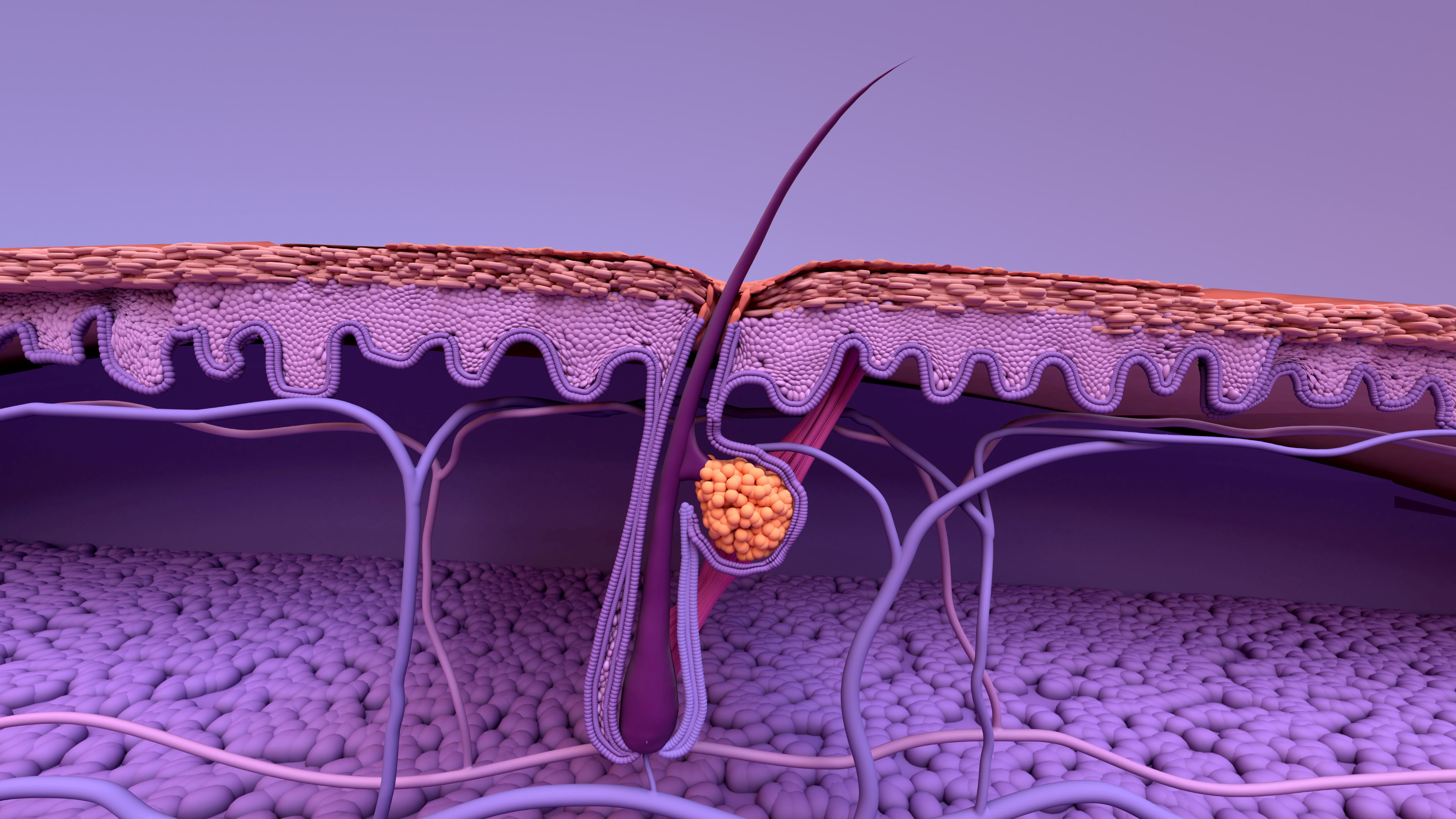Beauty vs Bodyguard Part 2: Structure of the Skin

Last week's Story focused on the important functions of our skin – truly amazing! This week we are diving into the structure of the skin and how the clever organisation of the different layers of the skin helps it carry out all of those protective, thermoregulating, immune functions.
Skin is composed of three main layers: the epidermis, dermis, and hypodermis. Read on below as these are described in more detail, and how they contribute to the overall function of the skin and where our topical skincare does its job.
The Epidermis
The epidermis is the outermost layer and is responsible for waterproofing and protecting the body. The epidermis is made up of 5 different layers, all multiple cells thick. This ‘layer’ (composed of many layers of cells) of skin is so incredible because it is constantly renewing itself. The cells of the uppermost of the 5 layers (Stratum Corneum) are actually ‘dead’ cells filled with keratin. These cells are constantly being shed through a process called desquamation. This is the body’s natural process of exfoliation but don’t panic, it won’t leave you skinless like Robbie Williams in that Rock Your Body film clip (you young’uns might have to google that one) because the cells are constantly being replaced by new skin cells from underlying layers starting with the bottom layer of the epidermis – the Stratum Basale (basal layer).
In between we have another 3 layers:
The Stratum Spinosum: located above the basal layer and contains several layers of polygonal-shaped cells. One of the key functions of the stratum spinosum is providing mechanical support to the skin to provide strength and stability. Additionally, many immune cells reside in this layer contributing to the skin's immune response.
The Stratum Granulosum:located just beneath the Stratum Corneum and above the Stratum Spinosum. This is the layer where keratinocytes begin to produce keratin, a protein that gives the skin its strength and flexibility. This layer also contains granules that help to waterproof the skin and maintain its barrier function.
If you’ve been counting along you may realise that’s only 4 layers and I said there were 5! The additional layer - the Stratum Lucidum - is a thin, translucent layer found only in thick skin, such as the palms of the hands and soles of the feet. It consists of flattened, clear cells that provide additional protection to this skin exposed to insults and the elements.
Why is the epidermis important?
One of the main functions of the epidermis is to protect the body from external threats such as pathogens, UV radiation, and chemicals. The epidermis acts as a physical barrier, preventing harmful substances from entering the body. The epidermis is also where Melanocytes live. These cells are found in the Stratum Basale and they have tentacle-like projections that weave up through the Stratum Spinosum. These cells produce melanin, the pigment that gives skin its colour and helps protect it from the harmful effects of UV radiation.
The epidermis as a whole also helps regulate body temperature and prevent dehydration.
The Dermis
The dermis is the layer of skin located beneath the epidermis. It is composed of connective tissue (collagen and elastic), hyaluronic acid, blood vessels, hair follicles, lymphatic vessels and sweat glands. The dermis is divided into two layers: the papillary dermis and the reticular dermis. The papillary dermis is the upper layer, while the reticular dermis is the deeper layer. The dermis varies in thickness across your body with it being thinnest on your eyelids and thickest on your back.
Why is the Dermis important?
The dermis serves several important functions in the body and is the main source of mechanical strength of the 3 layers. The dermis is essential for overall skin health as it contains the blood supply that facilitates wound healing and delivery of nutrients to the epidermis. Dilation and constriction of these blood vessels is also responsible for regulating body temperature. The dermis contains nerve endings that allow us to sense touch, pressure, and temperature and provides structural support to the skin, helping to maintain its shape and tone. The connective tissues in the dermis – collagen and elastin - provide support for the overlying epidermis but unlike the cells of the epidermis that continually renew, collagen and elastin production slows down as we age and environmental insults such as UV damage can accelerate this process. Loss of volume in the dermis leads to some signs of ageing such as skin sagging, fine lines and wrinkles.
The Hypodermis
The hypodermis, also known as the subcutaneous tissue, is the deepest layer of skin and consists of fat (adipose tissue), connective tissue, blood vessels and nerves. One of the main functions of the hypodermis is to provide insulation and cushioning for the body. The layer of fat in the hypodermis helps to regulate body temperature by acting as a barrier against heat loss and also serves as a reserve of energy that can be used by the body when needed.
Another important function of the hypodermis is to connect the skin to the underlying muscles and bones. This layer works in conjunction with the dermis above to provide support and structure to the skin, helping to maintain its shape and integrity.
Why is the Hypodermis important?
The hypodermis plays a crucial role in maintaining the overall health and function of the skin. Without this layer, the skin would be more susceptible to damage from external factors such as trauma and temperature changes. The adipose (fat) tissue in the hypodermis also helps to give the skin its plump and youthful appearance. As skin ages, this layer is often depleted and can contribute to sagging or “loss of volume” in the face.
I hope you’ve enjoyed this 2-part Cygnet Story about the structure and function of our skin and have a better understanding of why it’s so important to look after our skin – for aesthetic reasons AND overall health. By taking care of your skin through proper cleansing, hydration, and protection from the sun and environment, you can ensure that this remarkable organ continues to serve you well for years to come!
References:
- Lopez-Ojeda W, Pandey A, Alhajj M, et al. Anatomy, Skin (Integument) [Updated 2022 Oct 17]. In: StatPearls [Internet]. Treasure Island (FL): StatPearls Publishing; 2024 Jan-. Available from: https://www.ncbi.nlm.nih.gov/books/NBK441980/
- Smith, J. et al. (2018). The role of the dermis in skin health. Journal of Dermatology, 25(2), 87-102.
- Johnson, A. et al. (2019). Structure and function of the dermis. Dermatological Review, 12(4), 301-315.
- Brown, L. et al. (2020). The importance of collagen in dermal health. Journal of Skin Science, 8(3), 155-170.
- Jones, A. et al. (2019). Dermis structure and function. Journal of Skin Science, 10(4), 210-225.



